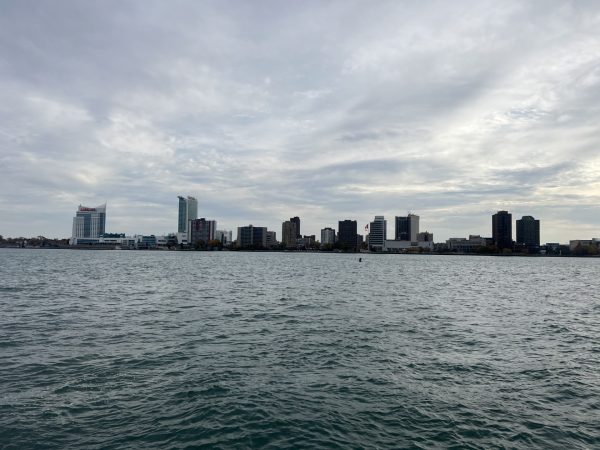Located close to the Detroit River, 35 miles from Lake Erie, and 60 miles from Lake Huron, the University of Detroit Jesuit sits near many major freshwater sources. Michiganders may think we are safe from the water insecurity that plagues many western states, but there are many threats that affect our water sources.The Great Lakes are an iconic landmark known worldwide, but these massive bodies of water face many threats. According to Augustus Schaefer, Chair of the UDJ Science Department and Honors Biology Teacher, “We get our water from the Detroit River, and that water all comes from Lake Michigan, Lake Superior, Lake Huron, and down through Lake St. Clair to us, so any contamination in those water sources could potentially reach us.”

One of the major threats affecting the Great Lakes at the moment are Algae Blooms. In 2020, Steven Francoeur, a professor of Biology at Eastern Michigan, told the Detroit News “It’s a big problem. When you look at the temporal and spatial scale of those blooms and the potential problems they have for the Lake Erie ecosystem and the water quality there, its very unsettling.” Algae blooms occur because fertilizer from fields wash into rivers and streams that feed the Great Lakes. These algae blooms are harmful to creatures all throughout the state. According to the CDC, the toxins created by the algae blooms can contaminate drinking water and afflict illnesses on human consumers. People may also become ill from wading in contaminated lake water or eating fish or other contaminated creatures.
Chemical contamination of water by PFAS, also known as “forever chemicals,” is a major concern for our water ways. PFAS, or Per- and Polyfluoroalkyl substances, are common chemicals used in products because of their resistance to water. According to the Agency for Toxic Substances and Disease Registry (ATSDR), PFAS has been used since the 1940’s in stain resistant fabrics, nonstick cookware, carpets, firefighting foam, and oil. More research is ongoing, but right now the State of Michigan says that health issues stemming from PFAS could include increase your chance of thyroid cancer, raise your cholesterol, alter immune response, and increase your chance of kidney and testicular cancer. According to the Milwaukee Journal Sentinel, the Environmental Research journal in 2023 released a report showing that local fish caught in Wisconsin had triple the amount of PFAS in them than acceptable for humans. During the EPA’s routine monitoring between 2013-2015, all 152 fish that were sampled from the Great Lakes had traces of PFAS in them.
An average Michigan resident uses 79 gallons of water per day according to the National Environmental Educational Foundation. In most restrooms at U of D, manual handle faucets or faucets with metal buttons are used to dispel water. Problems can occur with these faucets because if they were to be jammed or stuck they would cause water to drip or flow continuously. A dripping faucet can lose between 2-20 gallons of water a day. Although harder to upkeep and expensive to install, automatic faucets are found to cut water consumption between 32%-54% compared to manual faucets, according to a study by California State University. Schaefer also recommends the school installs a “better, more modern sprinkler system that uses the moisture of the soil to know when to turn on and off versus just going on a set schedule every day. We often see the sprinkler system running when it is has recently rained, which is wasted water that just runs into the sewer system.” These changes have a high up-front cost, and can be difficult to maintain, but by taking these actions as a school we can make a difference.
There are many ways you individually can help conserve water. According to the National Environmental Education Foundation, if Michigan residents took a shower for one less minute on average, 5.2 billion gallons of water would be saved per year. Reducing fertilizers on your lawns, using reusable bottles, and by reducing the time you keep your showers and sinks open will also help reduce your personal water consumption, and protect our shared resources for many generations.








